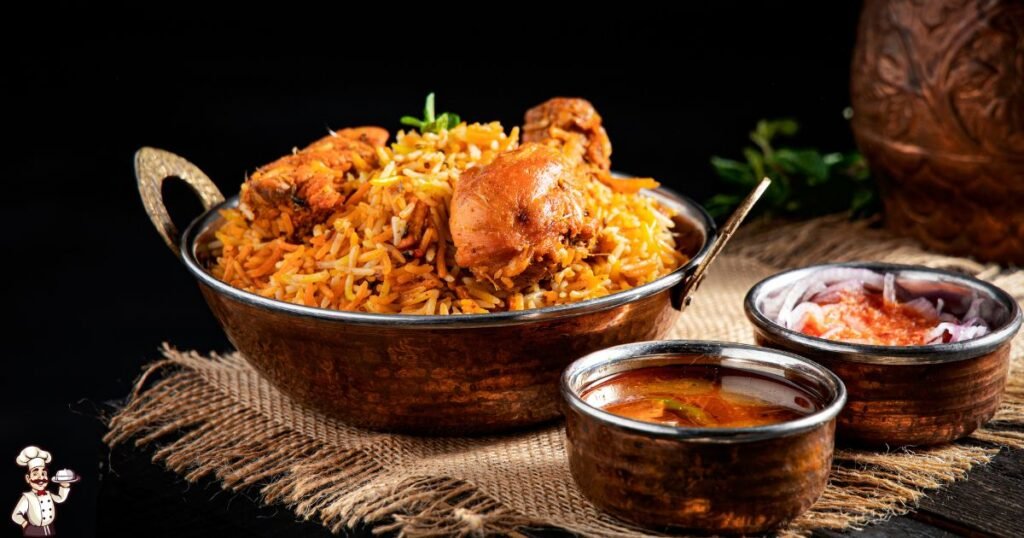During Ramadan, Muslims observe fasting throughout the day, making iftar the most anticipated dinner of the month. It’s a festive time filled with warm gatherings and delicious dishes that bring people together. This year, I want to share a complete yet simple Turkish menu featuring an authentic Ottoman touch. Start with Çeşminigar Çorbası, a rich lentil soup that’s comforting and packed with flavor.
Then, indulge in Köfteh served with potato and yogurt puré, known as Köfteli Patates Paçası, a specialty from the Black Sea region. Pair it with fragrant rice pilav cooked with orzo, and finish with cevizli parmak tatlısı, a delightful dessert made with walnut, semolina, and syrup. The best part? These ingredients are easy to find at home, and the recipes are quick to make. If you need detailed instructions, I will write them soon, but for now, you can refer to the video for step-by-step guidance.
“Food represents love when words fall short.” – Alan D. Wolfelt
Koftah with Creamy Potato & Yogurt Purée – A Black Sea Specialty
Essential Ingredients for a Flavorful Koftah Dish
- 300gr of ground beef for juicy and flavorful koftah
- 1 medium-size onion, finely chopped for extra taste
- 1/4 tsp salt and pepper to season the meat mixture
- A good pinch of baking soda to keep the koftah tender
- 4 tbsp olive oil to fry the koftah until golden brown
- 6 potatoes, boiled and mashed while still hot for a creamy base
- 2 tbsp butter or oil for a rich and smooth texture
- 2 cups thick whole-milk plain yogurt to bring a slight tangy taste
- 1 egg, lightly beaten, to help combine the ingredients
- 1 tbsp lemon juice for a fresh touch of acidity
- The fat left from the cooked kofta to enhance the flavors
- 1 tbsp heaped butter to add extra richness
- 3-4 tbsp olive oil for a silky finish
- 1/2 tsp red pepper flakes to bring mild heat
- Paprika for a touch of color and smoky depth
- Parsley leaves to garnish the dish beautifully
A warm and comforting dish that makes any iftar table special - Simple ingredients, rich flavors, and a festive touch for Ramadan
- A must-try recipe for an easy yet authentic Turkish iftar experience.

| Component | Ingredients |
| For the Koftah | 300g ground beef, 1 onion (chopped), 1/4 tsp salt & pepper, a pinch of baking soda, 4 tbsp olive oil |
| For the Base | 6 boiled potatoes (mashed), 2 tbsp butter, 2 cups whole-milk yogurt, 1 egg, 1 tbsp lemon juice |
| For Garnish | Butter, olive oil, red pepper flakes, paprika, parsley |
“Cooking is an art, but all art requires knowing something about the techniques and materials.”
Çeşmi-nigar Çorbası – A Comforting Ottoman-Style Lentil Soup
Ingredients:
- 1 medium-size onion, finely chopped for a deep flavor
- 1 cup red lentils, washed and drained for a smooth texture
- 4 tbsp olive oil to sauté the ingredients perfectly
- 1 heaped tbsp flour to thicken the soup
- 1 tsp salt to balance the flavors
- 1-liter hot water for the ideal consistency
- 1/2 cup milk to give a creamy touch
- 1 egg yolk, whisked, to enhance the richness
- 1 tbsp lemon juice for a hint of tanginess
- Some hot water or reserved soup to warm the milk mixture
- 1 tbsp butter, melted, for a velvety finish
- 4 tbsp olive oil to create the perfect spice topping
- 2 tsp dried mint for an authentic Turkish aroma
- 1 tsp paprika to add a mild smoky depth
- 1 tsp red pepper flakes (optional) for extra heat
- A comforting, creamy dish that’s perfect to serve at iftar
- Made with simple ingredients yet full of rich flavors
- A must-try soup for your Ramadan menu
Cevizli Parmak Tatlısı – A Delightful Walnut & Semolina Dessert
Ingredients:
- 125 gr butter at room temperature for a soft dough
- 1/4 cup vegetable oil to add lightness to the texture
- 2 tbsp semolina for a slightly crunchy bite
- 1/4 cup sugar to balance the sweetness
- 1 egg, bringing everything together smoothly
- 1 tsp each baking powder and vanilla for a fluffy and aromatic result
- 2+1/4 cup flour, more or less, depending on consistency
- About 1/2 cup semolina for coating, giving a crispy exterior
- 1/2 cup coarsely chopped walnuts for a rich, nutty filling
- 1/2 tsp cinnamon to add warmth and depth
- 1 tsp sugar to enhance the filling’s sweetness
- 1+3/4 cup sugar for the perfect syrup
- 2+1/4 cup water to dissolve and create a smooth syrup
- 3-4 drops lemon juice to prevent crystallization
- Ground pistachios to garnish, adding an elegant touch
- Optional garnish, making the dessert even more special
- A delightful balance of soft inside and crispy outside
- The perfect treat to enjoy after a long day of Ramadan fasting
- Easy to make with simple pantry ingredients
- A traditional Turkish dessert that completes any iftar menu
Rice Pilav with Orzo – A Classic Turkish Side Dish
No Turkish iftar menu is complete without a warm and fluffy rice pilav. This dish, made with orzo, is a staple in Turkish homes, bringing a comforting balance to the meal. The orzo is first toasted in butter or olive oil until golden brown, then mixed with rice and slowly simmered in hot water or broth until perfectly tender. The key to achieving the best texture is letting it rest covered for a few minutes before serving. This pilav pairs beautifully with Köfteh with potato and yogurt puré, making it a must-have for your iftar table.

The Ottoman Heritage in This Iftar Menu
Turkish cuisine is deeply rooted in Ottoman culinary traditions, and this menu reflects that legacy. Çeşmi-nigar Çorbası, originally crafted in the Ottoman palace kitchens, is a refined lentil soup enriched with milk and egg yolk, giving it a velvety texture. Similarly, Köfteli Patates Paçası, a specialty from the Black Sea region, showcases the Ottoman love for combining meat, yogurt, and rich spices. Even the Cevizli Parmak Tatlısı, a syrup-soaked walnut and semolina dessert, carries the essence of Ottoman-era sweet treats. This menu isn’t just about food; it’s a taste of history on your plate.
Step-by-Step Cooking Guide – Where to Find Video Instructions
If you’re new to making Turkish dishes, don’t worry! I will write detailed instructions soon, but in the meantime, you can refer to the video guide for a step-by-step tutorial. The video covers everything from prepping the koftah to perfecting the creamy yogurt puré. Watching it will make the cooking process even easier and ensure you get the perfect texture and flavor for each dish. I’ll share the complete recipe soon, so stay tuned!
Cevizli Parmak Tatlısı – A Sweet Finale for Iftar
After a long day of fasting, nothing is more satisfying than a sweet treat to end your iftar on a high note. Cevizli Parmak Tatlısı is a walnut-filled, semolina-based dessert soaked in syrup, making it both crispy on the outside and soft inside. The dough is enriched with butter and vegetable oil, giving it a melt-in-your-mouth texture, while ground walnuts and cinnamon add a deep, nutty flavor. Once baked to golden perfection, the warm pastries are drenched in a fragrant sugar and lemon syrup, ensuring every bite is rich and indulgent. A sprinkle of ground pistachios makes this dessert even more special!

Frequently asked questions?
What makes this iftar menu authentically Turkish?
This menu reflects the essence of Turkish cuisine by featuring traditional dishes with an Ottoman influence. Çeşmi-nigar Çorbası, a creamy lentil soup, originates from the Ottoman palace kitchens, while Köfteli Patates Paçası is a comforting dish from the Black Sea region. The combination of yogurt, spices, and slow-cooked flavors is deeply rooted in Turkish culinary traditions.
Can I make this iftar menu ahead of time?
Absolutely, many of these dishes can be made ahead of time. The koftah mixture can be shaped and stored in the refrigerator until ready to cook. The mashed potatoes and yogurt purée can also be made earlier and reheated before serving. The lentil soup can be cooked ahead and kept warm, while the Cevizli Parmak Tatlısı tastes even better the next day as the syrup fully absorbs into the dessert.
Is there a vegetarian alternative for koftah?
For a vegetarian version, koftah can be made using mashed lentils or chickpeas instead of ground beef. A mixture of cooked lentils, breadcrumbs, spices, and egg can be shaped into patties and pan-fried for a delicious and protein-rich alternative. This maintains the traditional texture while making the dish plant-based.
What’s the secret to making the perfect Turkish rice pilav?
Achieving fluffy and flavorful Turkish rice pilav requires proper technique. Toasting the orzo in butter before adding the rice enhances its nutty flavor. Using hot water or broth allows the rice to cook evenly, while letting it rest covered after cooking helps absorb excess moisture, resulting in perfectly tender grains.
Can I use Greek yogurt instead of whole-milk yogurt?
Greek yogurt can be used as a substitute, but since it is thicker than traditional Turkish yogurt, it is best to dilute it with a little milk or water to achieve the desired consistency. This will ensure that the yogurt purée remains smooth and blends well with the mashed potatoes.
What is the significance of these dishes in Ramadan?
These dishes are not only nourishing but also hold cultural and religious significance. They provide a balance of protein, carbohydrates, and healthy fats to help sustain energy after a full day of fasting. Additionally, Turkish iftar meals are about bringing families and communities together, and these dishes reflect the hospitality and warmth of Ramadan gatherings.
How can I make the Cevizli Parmak Tatlısı less sweet?
The sweetness of this dessert can be adjusted by reducing the amount of sugar in the syrup. Using honey instead of sugar provides a natural alternative, and soaking the pastries for a shorter time in the syrup will result in a milder sweetness while still keeping them moist and flavorful.
Can I bake the koftah instead of frying?
Yes, the koftah can be baked in the oven instead of frying for a healthier option. Baking at 375°F (190°C) for about 20–25 minutes, turning them halfway through cooking, will ensure an even golden-brown crust. They can also be air-fried for a crispier texture with minimal oil.
Where can I find step-by-step video instructions?
A detailed video guide is available to walk through the entire cooking process, from shaping the koftah to assembling the mashed potato and yogurt purée. The video also includes tips for achieving the perfect texture and flavor. The link to the video is provided in the article for easy reference.
What are some other Turkish dishes I can serve with this menu?
To complement this iftar menu, traditional Turkish dishes such as pide (Turkish flatbread), şakşuka (a vegetable meze with eggplant and tomatoes), and güllaç (a light, milky dessert) can be added. These dishes enhance the dining experience by offering a variety of textures and flavors that perfectly match the richness of the main courses.
Conclusion
This easy and authentic Turkish iftar menu is a perfect way to celebrate Ramadan with family and friends. Featuring a harmonious blend of comforting flavors, from the creamy Çeşmi-nigar Çorbası to the rich Köfteli Patates Paçası and the perfectly paired rice pilav, each dish carries the essence of Turkish culinary heritage. The sweet finale, Cevizli Parmak Tatlısı, adds the perfect touch of indulgence after a long day of fasting. With simple, readily available ingredients and easy-to-follow steps, this menu brings both tradition

Chef Ceren Narin is a passionate food lover and traveler dedicated to sharing authentic Turkish cuisine. As the founder of TurkishYum.com, she explores traditional flavors, recipes, and culinary heritage, bringing the magic of Turkey’s food culture to your kitchen.

